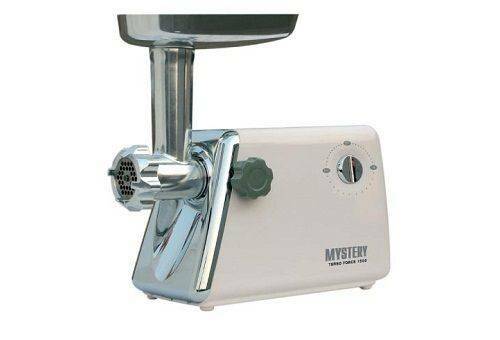Russian sauna with steam bath - is a guarantee of health and longevity, but that the recovery procedures provide maximum benefit, you must to choose the right insulation for the different designs baths, considering different functionality, humid space mode selected material elements. In addition, you must know the technology of thermal insulation process, compliance with which will not only keep the heat in the bath, but also significantly reduce the energy consumption of fuel. To determine which heater is best for the bath, you need to know the positive and negative aspects of each type of insulation material.

What heaters can be used in the bath
Manufacturers offer a wide range of thermal insulation materials, but do not forget the traditional methods of thermal insulation applied over the centuries, which can be used in a bath today. Among the modern heaters artificial popular:
- sheets of extruded polystyrene (penoplex);
- simple foam;
- polyurethane;
- mineral wool products;
- ecowool;
- expanded clay gravel and expanded clay plates;
- Combined insulation in the form of mats or basalt polystyrene material coated with a foiled.
Despite the high insulation quality of these materials for different rooms of the bath structure you must choose the heater which meets the requirements of safety, environmental and durability.
Styrofoam

Expanded polystyrene (commonly polystyrene) used for the insulating walls bath outside attic floor or floor indoors pair. The advantages of this material include:
- high degree of resistance to wet environment;
- resistance to microorganisms and molds;
- It does not support the open fire;
- low specific weight;
- low cost;
- simple processing.
The negative features include "love" mice to foam and poisonous substances plastic material in case of fire in the sauna room. Therefore, it is not recommended to be used for thermal insulation of steam. Crunching material, mice and rats thereby reduce its insulating characteristics. In the allocation of poisonous fumes can be said that in the steam room people are not too long, and the use of such insulation is quite acceptable. In addition, modern industry produces special types of foam, which allowed SanPin for use in residential and public buildings. For example, a variety of decorative elements of the interior - moldings, fillets, plinths and so on.
extruded polystyrene
This material has all the properties which are inherent in the foam, but at a lesser thickness of the product, is able to maintain the same thermal insulation characteristics. Extruded polystyrene bole durable than the foam, due to a dense structure, whereby the duration of its operation is increased significantly. The material is non-combustible insulation. When struck by sparks of fire it does not support further combustion. The negative factor is its increased cost compared with the price of his brother. However, it is not recommended to use it inside to insulate the steam room, as well as foam, since these materials withstand temperature without loss of its properties is not above 75 degrees, as is well known, in the sauna temperature can sometimes reach much higher degrees.
Polyurethane foam

Polyurethane foam insulation in the form of liquid appeared on the building materials market is not so long ago. Its essence lies in the application of two-component polyurethane spray liquid, which on contact with air in the foam becomes 90% consisting of air bubbles. After a few minutes, the foam hardens, almost ten-fold increase in volume.
Foamed polyurethane whole bunch has the positive properties:
- high thermal and sound quality;
- strength, flexibility and elasticity;
- resistance to deformation processes;
- environmental safety, since the material is produced from pure products, with heating from it does not emit harmful substances and unpleasant odors;
- the ability to easily withstand sudden changes in temperature from +100 to -90 degrees, which allows to use the material as insulation for Russian bath or a Finnish sauna.
Foamed polyurethane, used as a heater, except the foregoing is totally fireproof material, a dense layer covering all wooden elements, giving spread fire. It also protects wood structures from penetration of harmful insects that naturally extends the life of the bath.
Compared with other types of insulation, polyurethane foam quickly and easily applied to any surface, regardless of their configuration. With skillful action thickness the insulation layer may be different.
Negative factors using this type of insulation include the fact that it can be used only if a special device spraying liquid. And its acquisition or lease requires certain financial costs and handling skills.
mineral products

Mineral wool differ on the source material, as which may be:
- fiberglass;
- material derived from a natural stone melt rocks - basalt, dolomite, diabase and others;
- waste metallurgical industry slag.
Almost all of these kinds of mineral wools can be used as a heater for the steam room, washing facilities and other structural elements of bath buildings. However, the thickness of the insulation layer of mineral wool increases compared to polystyrene materials. Increasing popularity of basalt wool, given its specifications.
basalt heat insulation material

The advantage of this material is:
- high thermal insulation capacity;
- resistance to sharp changes of temperature;
- the material is not exposed to the fire;
- It has good mechanical strength and low specific weight;
- basalt wool easily placed on any design configuration, excluding formation of cold bridges at the joints;
- the duration of the maintenance period.
But there is this material and its flaws, which is fear of water and that the rodents are not afraid to do it in their burrows. Wet basalt wool loses its insulating qualities, and in contact with the wet material wooden structures in the past the process of decay begins. Therefore, use basalt heater for the bath, and specifically in the steam room is not recommended.
fiberglass

Full Article - wall insulation basalt slabs.
Glass wool, having the same technical characteristics as the basalt material differs in that it is not to such an extent exposed to moisture. It tolerates the process of stacking and transportation, crushed fibers are completely restored.
She did not touch the mouse and rat, it fits well, but its use entails mounting difficulty due released small fibers that irritate human skin and are dangerous if they fall into the respiratory authorities. In addition to the disadvantages of this material include:
- short service life;
- a lesser degree of insulation than other types of heaters;
- The presence of some brands formaldehyde resins.
slag wool
Insulation is made from blast furnace slag, is not notable for its ecological purity and safety for human health. Of the merits of slag wool should be noted:
- relatively high ability to retain heat, and to extinguish sound, but to a lesser degree than basaltic;
- low cost;
- It can not be rodents, the development of mold and other microorganisms;
- simple and easy installation, comparable to the installation of other types of mineral wools.
Among the shortcomings:
The large coefficient of water absorption. When wet can allocate acid has a devastating effect on the metal structure and pumping elements causing corrosion.
Low resistance to sudden changes in temperature, which is characteristic of such rooms as the bathroom.
stacking difficulty, considering the excessive brittleness of the fibers that are the same as that of the sharp and prickly glass edge.
The presence of insulation such hazardous substances as - phenol, formaldehyde.
Ecowool

The material is made from recycled materials, that is waste paper, fluff and treated with flame retardants and preservatives. It has a gray or light gray, loose fibrous structure. The advantages of this, quite new type of insulation include:
- good heat and sound insulation properties;
- resistance to high temperatures;
- a long time do not support an open fire;
- It is highly resistant to the processes of decay; environmentally friendly, if you do not take into account its impregnation retardants and antiseptics. But these substances are low-toxic and volatile.
The material can absorb moisture, but also easily releases it into the environment at a certain level of dryness of the air. After drying, the insulating properties of Cellulose Fiber remain at the same level. Before ecowool applied to the surface of insulated structures, the material should be slightly moistened. Commercially available lignin its structure under the influence of water holds the fibers together and well glued to any surface. It can be used for insulation of attic floors dry method. Inside the sauna facilities is not recommended, as the material will not have time to dry after each use of the bath.
expanded clay aggregate

For the insulation of attic floors, floors, filling the cavities with the masonry with the "wells", expanded clay is used gravel of different fractions. Thermal conductivity, this material is inferior to many types of insulation, but its main advantage is the low price and versatility. Besides the method a bulk insulation, expanded clay beads may be filler for lightweight concrete.
foil insulation

Whichever kind of insulation was not chosen during installation necessarily be laid vapor barrier film. Foil insulation combines and vapor barrier and thermal insulation. But other than that it works even reflectors of thermal radiation, preventing heat out through various cracks, loose abutting structures. Material made in various embodiments:
- basalt fibers;
- polyethylene foam;
- mineral material;
- extruded polystyrene foam.

For each material is glued on top of the thinnest aluminum foil. The shiny side of the thermal insulation material should be facing into the room. It can be used for all structures and bath facilities.
The basic gist of the article
Insulated bath was necessary to use different types of insulating materials which are maximally effective for building different functionality and meet certain requirements - durability, low cost, ability to retain heat inside the bathhouse built to be safe for health people.



